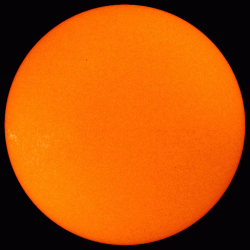 According to the National Oceanic and Atmospheric Administration (NOAA), a new solar cycle is about to begin. The original forecast for Solar Cycle 24 was slated for March 2008, but the action is already under way as the first magnetically reversed sunspot of the new 11-year cycle has already appeared in the Sun's northern hemisphere! Will it be strong or will it be weak? Time will tell… But if you live in a high latitude northern area? Be on alert tonight!
According to the National Oceanic and Atmospheric Administration (NOAA), a new solar cycle is about to begin. The original forecast for Solar Cycle 24 was slated for March 2008, but the action is already under way as the first magnetically reversed sunspot of the new 11-year cycle has already appeared in the Sun's northern hemisphere! Will it be strong or will it be weak? Time will tell… But if you live in a high latitude northern area? Be on alert tonight!
Last April an international panel of solar experts forecast that Solar Cycle 24 would start in March 2008, plus or minus six months. Upcoming solar storms definitely lay ahead, but neither the NOAA Space Environment Center in coordination with an international panel of solar experts predict a record-breaker. The most recent activity forecast was predicted for March with the peak occurring in late 2011 or mid-2012—up to a year later than expected. While original forecasts put the beginning activity a last Fall, the delay has simply left the experts guessing.
During a solar cycle, the frequency of sunspots rises and falls and spotting new activity may mean that the action is just heating up. These areas of intense magnetic activity on the Sun, can affect Earth by disrupting electrical grids, airline and military communications, GPS signals and even cell phones. During periods of intense sunspot activity, known as solar storms, highly charged radiation from the Sun may head toward Earth…
"Our growing dependence on highly sophisticated, space-based technologies means we are far more vulnerable to space weather today than in the past," said NOAA Administrator Conrad C. Lautenbacher, Jr.
What does that mean for the Blue Planet's inhabitants? There's nothing to fear… except perhaps that it might be cloudy! Increased activity is a wonderful time to begin studying sunspots for yourself and to keep a eye out for aurora activity. Solar cycle intensity is measured in maximum number of sunspots—dark blotches on the sun that mark areas of heightened magnetic activity. The more sunspots there are, the more likely it is that major solar storms will occur.
"By giving a long-term outlook, we're advancing a new field—space climate—that's still in its infancy," said retired Air Force Brig. Gen. David L. Johnson, director of the NOAA National Weather Service. "Issuing a cycle prediction of the onset this far in advance lies on the very edge of what we know about the Sun."
NOAA, an agency of the U.S. Commerce Department, is celebrating 200 years of science and service to the nation and the world. The NOAA Space Environment Center also is the world warning agency of the International Space Environment Service, a consortium of 11 member nations that generate a first alert of solar activity and its affects on Earth and you, too, can check out the information here! Stay tuned as "Universe Today" brings you guidelines on how you can solar observe and when you can possibly expect aurora in your area! As it stands, a high-speed solar wind stream is already buffeting Earth's magnetic field and this could spark a geomagnetic storm. For high latitude observers, this means you may see the aurora tonight!!



No comments:
Post a Comment